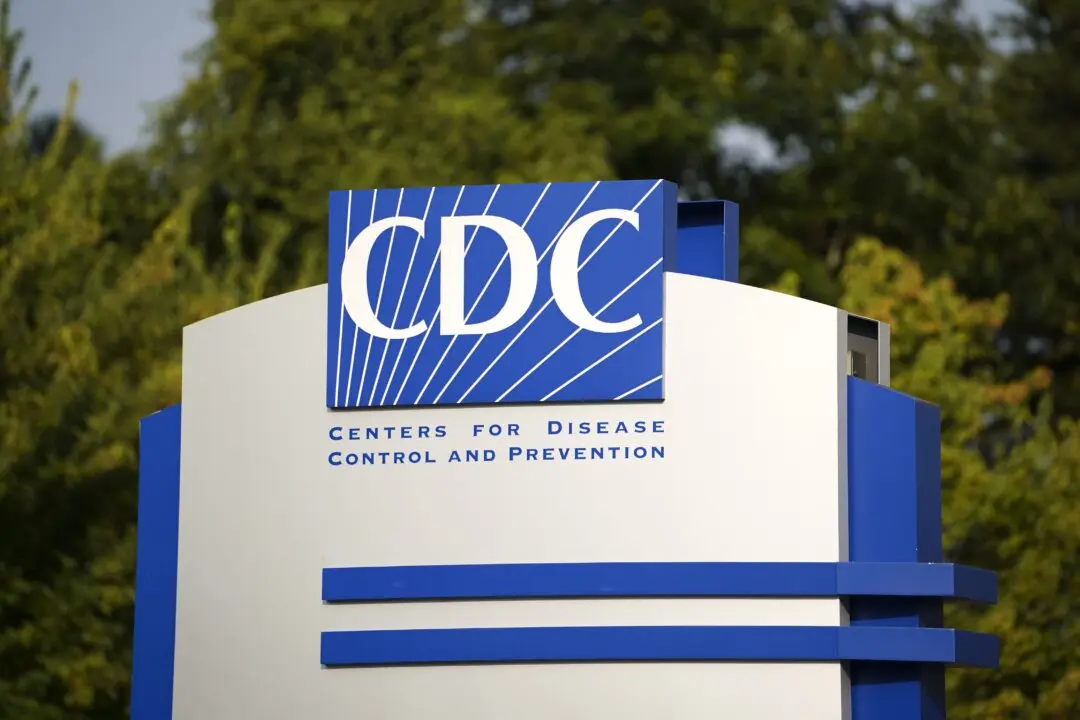On a rainy day with severe storms forecast across the state, Ohio voters are heading to the polls to determine who will prevail in the contentious U.S. Senate primary on May 3. The winners will advance to the November 8 general election to decide who will replace retiring GOP Sen. Rob Portman.
The Ohio GOP U.S. Senate primary represents the first test of Donald Trump’s influence in the 2022 midterm election cycle.
Trump won Ohio by eight points in the 2016 and 2020 presidential elections. On April 15, he endorsed “Hillbilly Elegy” author and venture capitalist J.D. Vance.
It was a move that drew criticism from some conservative groups and supporters of opposing candidates in the race because of the widely publicized disparaging remarks Vance made about Trump in 2016.
The endorsement “has made this Vance’s race to lose,” University of Cincinnati political science professor David Niven said.
Vance is joined by the former state treasurer and state representative Josh Mandel, Cleveland investment banker Mike Gibbons, former Ohio Republican Party chairwoman Jane Timken, Ohio state senator Matt Dolan, central Ohio entrepreneur and activist Mark Pukita, and Columbus businessman Neil Patel, in a quest to earn the GOP nomination.
The winner will likely face Rep. Tim Ryan (D–Ohio) in the general election. Ryan is heavily favored to defeat Morgan Harper, an attorney, activist, and former Consumer Financial Protection Bureau senior adviser; and Columbus activist and tech executive Traci Johnson in the Democratic party primary.

“It’s been a bruising primary that has lasted for more than a year. I think many Ohioans are ready for it to be over, no matter who wins, and many conservatives are ready for a reunification of the Republican party,” said Hayden Ferguson, a 19-year-old University of Dayton student who is the founder of Unapologetically Constitutionally Conservative.
Ferguson travels around Ohio attending GOP events promoting an “America First” platform.
“There are seven candidates on the ballot, and people who usually agree on many topics are divided because of how tense this race has been,” Ferguson added.
“Though supporters of his opponents are upset, J.D. Vance will see a positive impact today because of [former] president Trump’s endorsement, which carries weight in Ohio.”
Uncertainty has defined the Senate primary race since last summer. Mandel led in the polls for several months. Gibbons spent a short time in first place. Vance started his surge after Gibbons and Mandel engaged in a heated on-stage altercation during a March 18 debate.
On May 1, Emerson College released a survey conducted from April 28 to April 29 that found Vance leading with 26 percent followed by Mandel at 24 percent, Dolan at 21 percent, and Gibbons at 17 percent.
The Trafalgar Group revealed its newest poll, conducted April 29 to May 1. Vance sits atop the field with 26.2 percent followed by Dolan (22 percent), Mandel (20.8 percent), Gibbons (13.1 percent), Timken (5.7 percent), Pukita (1.9 percent), and Patel (1.7 percent), with 8.6 percent undecided.
The race is already the most expensive in state history with more than $66 million in TV and radio spending, Columbus-based Medium Buying firm reported.
“Will we be the MAGA party, or will we go back to 2004 and weakly do nothing to defend our country?” Vance said at his final campaign event on May 2.
While Vance has traversed the state accompanied by pro-Trump figures like Rep. Marjorie Taylor Greene (R–Ga.) and Rep. Matt Gaetz (R–Fla.) at “No BS Tour” town halls, Mandel has conducted his campaign with dozens of “Faith and Freedom” rallies held in churches across Ohio.
Last weekend, Mandel was accompanied at campaign stops with Sen. Ted Cruz (R–Texas).
Mandel is confident he will win the primary and said he will work with Trump to defeat Ryan in November and serve as a reinforcement for “America First” conservatives like Rep. Jim Jordan (R–Ohio), Cruz, and Trump.
T.J. Honerlaw, who is vice chair of the Warren County Republican Party Central Committee in southwest Ohio, is among the people who were displeased with Trump’s endorsement of Vance.
“I support and voted for Josh Mandel. He is the true conservative with a proven track record,” Honerlaw said. “I personally believe Trump wants to be associated with ‘winners’ or candidates he thinks will win instead of conservatives.”

Gibbons has given more than $16 million, including $1 million since Trump endorsed Vance. During a bus tour stop in northwest Ohio last weekend, the suburban Cleveland native said he still believes there is a path to victory, even without Trump’s stamp of approval.
“We’ve been everywhere in the state, 88 counties, in many counties we were the only ones that spent any time with them. I’m hopeful it will pay off,” Gibbons said on May 1. “We’re gonna see how smart the voters of Ohio are here in a few days.”
Dolan has ascended in the polls since Trump endorsed Vance. Among the candidates who are consistently in the top five in surveys, he is the only one who has not centered his campaign around a pro-Trump message.
“I was the last person into this race, so the undecideds have had multiple times to go with any other candidate,” Dolan said on May 1. “As they’re becoming aware of me, that’s why I’m rising in the polls.
As for the candidates who sought Trump’s endorsement but were left disappointed, Dolan said, “I don’t know what they can offer to Ohioans now. I don’t know what they can offer to Republicans who want someone to deliver on what Republicans stand for. I’ve done that as a state senator. That’s what I offer Ohio voters.”
Ferguson believes that “candidates who received little mainstream media coverage” will garner a “surprising percentage of votes,” referencing Pukita and Patel.
Laura, who lives in northeast Ohio, agrees.
“I voted Mark Pukita. I almost voted Mike Gibbons. But I trust Mark most. I know he’s for the people and has uncompromising principles,” she explained.
“I think Mike is a good guy too, but he is connected with wealthy businesspeople. Not that that’s inherently negative, it just puts him at a higher risk of being compromised.
“Some might say I ‘threw away my vote for candidates who can’t win.’ I think many of us are tired of repeating the definition of insanity and voting for the lesser of evils,” Laura added.
“The Ohio Republican Party has two factions. One is the establishment Republicans and the other includes patriots who are true conservatives,” she said. “The party needs to return to its true conservative roots.”
The polls close in Ohio at 7:30 p.m.





